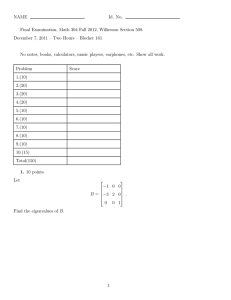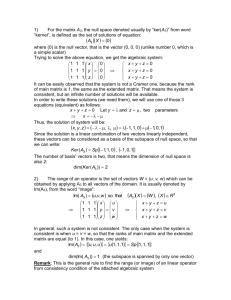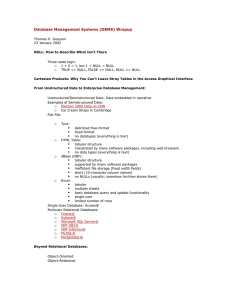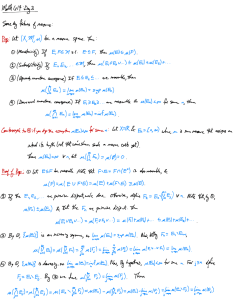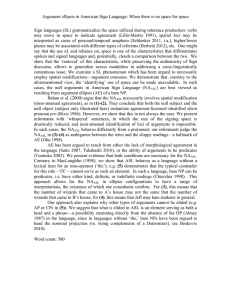Image revisited Math 311-102
advertisement
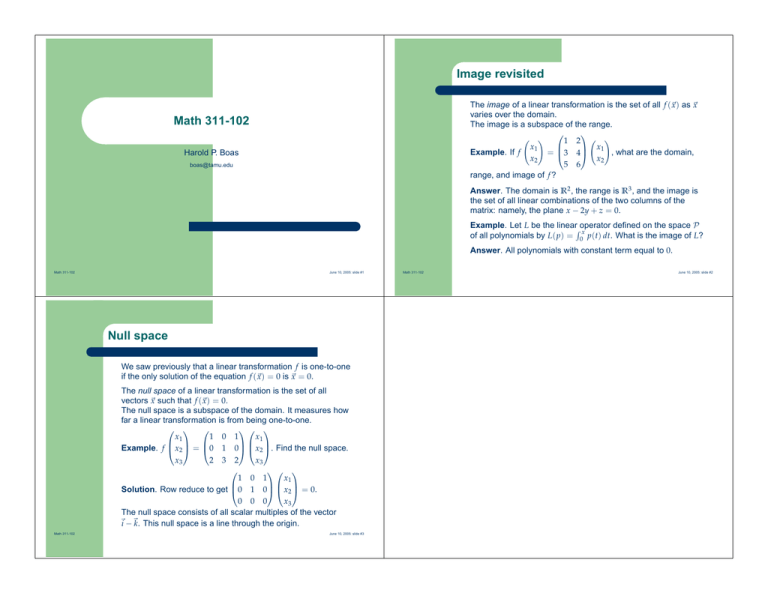
Image revisited The image of a linear transformation is the set of all f (~x ) as ~x varies over the domain. The image is a subspace of the range. Ã ! 1 2 Ã ! x1 x1 Example. If f = 3 4 , what are the domain, x2 x2 5 6 range, and image of f ? Math 311-102 Harold P. Boas boas@tamu.edu Answer. The domain is R2 , the range is R3 , and the image is the set of all linear combinations of the two columns of the matrix: namely, the plane x − 2y + z = 0. Example. Let L be the linearRoperator defined on the space P x of all polynomials by L(p) = 0 p(t) dt. What is the image of L? Answer. All polynomials with constant term equal to 0. Math 311-102 June 10, 2005: slide #1 Null space We saw previously that a linear transformation f is one-to-one if the only solution of the equation f (~x ) = 0 is ~x = 0. The null space of a linear transformation is the set of all vectors ~x such that f (~x ) = 0. The null space is a subspace of the domain. It measures how far a linear transformation is from being one-to-one. x1 1 0 1 x1 Example. f x2 = 0 1 0 x2 . Find the null space. 2 3 2 x3 x3 1 0 1 x1 Solution. Row reduce to get 0 1 0 x2 = 0. 0 0 0 x3 The null space consists of all scalar multiples of the vector ~i − ~k. This null space is a line through the origin. Math 311-102 June 10, 2005: slide #3 Math 311-102 June 10, 2005: slide #2

